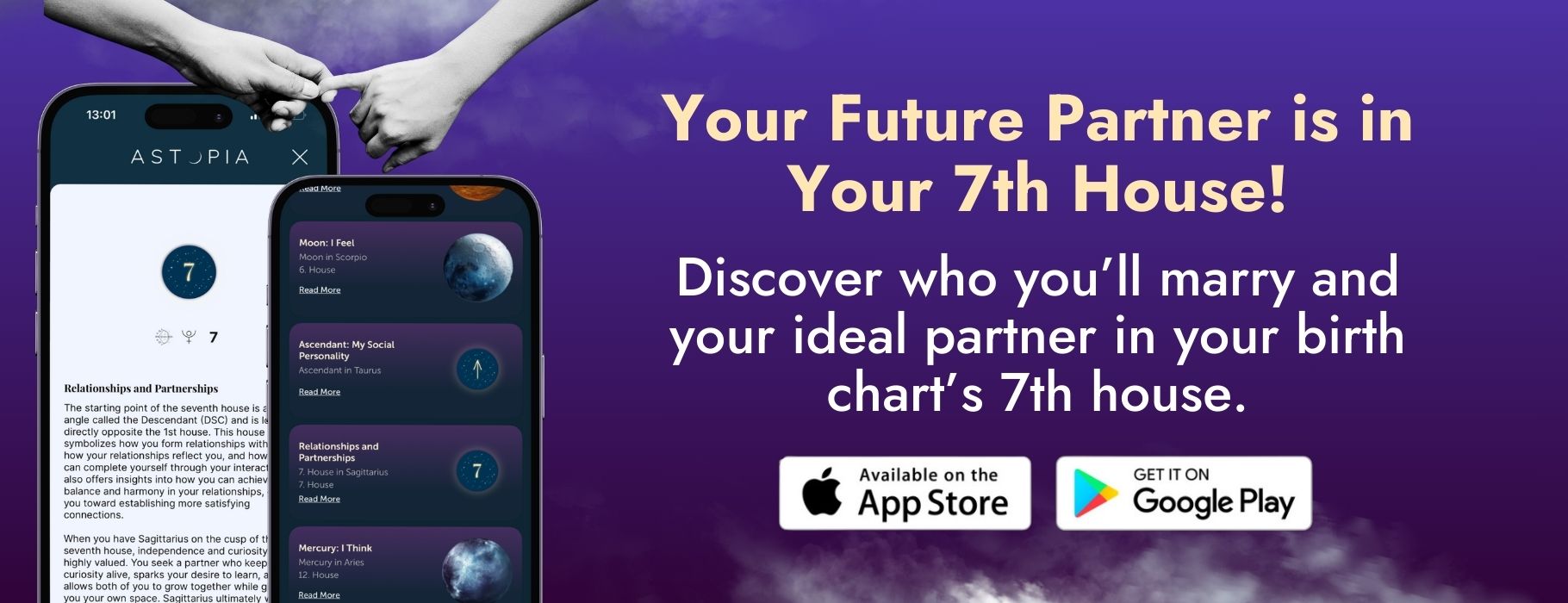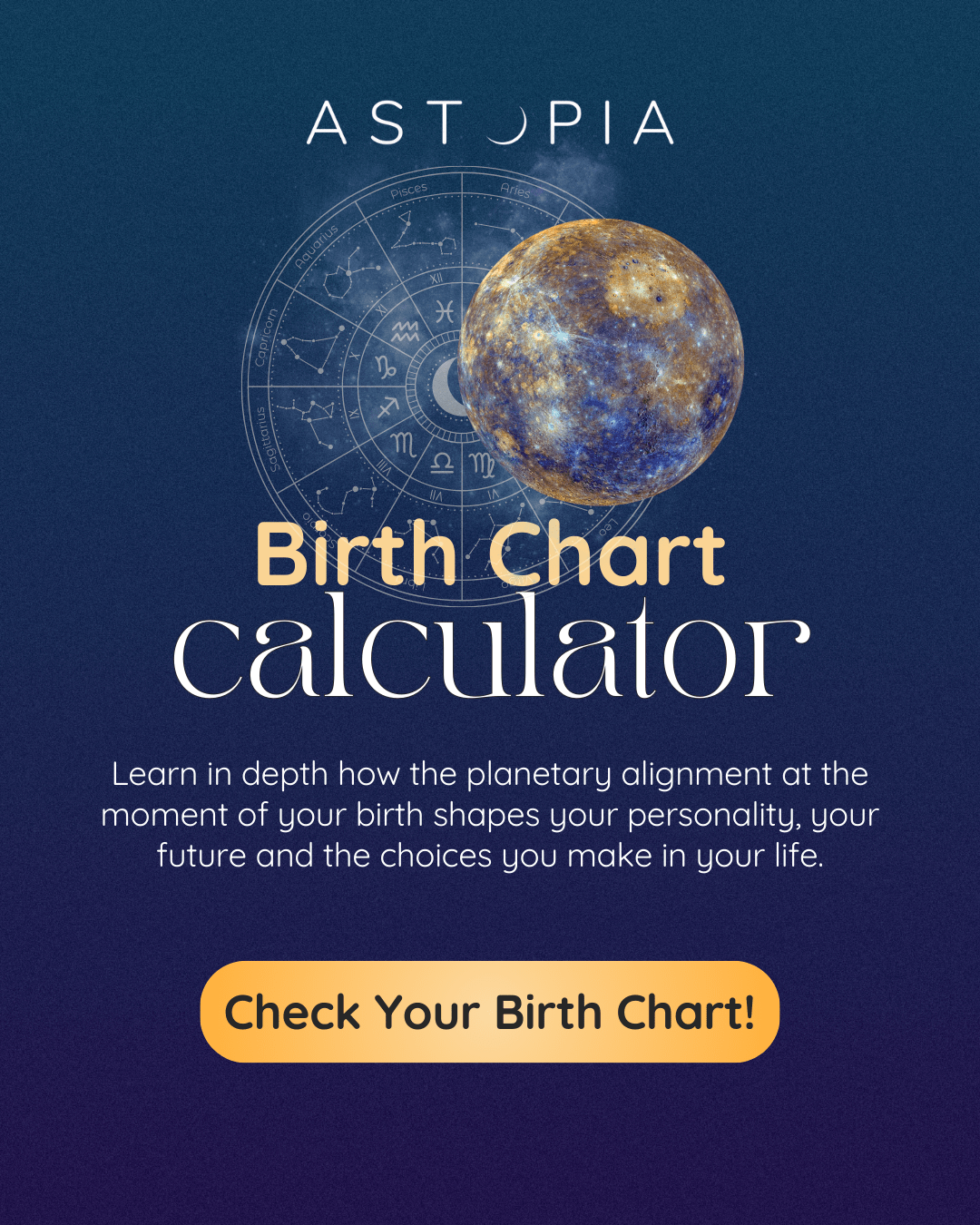
3/21/2025
Author: Astopia TeamSynastry Chart and Elements: A Comprehensive Guide for Unraveling Astrological Compatibility
Have you ever wondered why some relationships feel effortlessly harmonious while others seem like a constant battle? The answer may lie in the synastry chart, a powerful astrological tool that reveals the cosmic connections between two individuals. Whether you’re looking to understand the best synastry chart aspects, explore the importance of elements in synastry, learn how to read a synastry chart, or examine natal chart aspects, this guide will provide you with the essential insights to decode relationship dynamics through astrology.
A synastry chart love match goes far beyond Sun sign compatibility. By analyzing planetary aspects in synastry explained, astrologers can uncover the hidden forces shaping attraction, emotional bonds, and long-term potential. From the passionate intensity of fire and water sign compatibility in synastry to the intellectual balance of air and earth sign interactions in synastry, each element plays a crucial role in defining how two people connect.
This beginner’s guide to synastry charts will walk you through the key analysis techniques used to interpret relationship charts, revealing how planetary alignments influence love, communication, and emotional depth. Whether you are seeking clarity in a romantic relationship, a friendship, or even a karmic bond, understanding synastry chart compatibility is the key to unlocking deeper connections and making sense of your most significant relationships.
Let’s dive into the fascinating world of synastry chart analysis techniques and uncover the astrological secrets behind lasting attraction, emotional harmony, and transformative love!
What Is a Synastry Chart and Why Is It Important in Relationships?
A synastry chart is one of the most powerful tools in astrology for understanding relationship dynamics. It compares the birth charts of two individuals, analyzing planetary aspects, house overlays, and elemental interactions to determine compatibility, challenges, and karmic connections. Unlike general zodiac sign compatibility, a synastry chart love match provides a deep, personalized insight into how two people influence each other on an emotional, mental, and spiritual level.
The importance of elements in synastry plays a crucial role in defining the balance or friction within a relationship. Fire and water sign compatibility in synastry tends to be passionate yet emotionally turbulent, while air and earth sign interactions in synastry can create a dynamic of intellectual stimulation versus stability. Understanding these elemental influences helps to navigate relationship strengths and weaknesses more effectively.
A well-analyzed synastry chart compatibility reveals:
- The best synastry chart aspects that foster harmony and mutual understanding.
- Potential conflicts and power struggles, helping couples recognize areas that require effort.
- The role of planetary aspects in synastry explained, including Venus for love, Mars for passion, and Mercury for communication.
- How house placements affect different life areas, such as romance, career, or personal growth.
By learning how to read a synastry chart, individuals can gain deeper clarity on their relationship potential, allowing them to strengthen their bonds, navigate challenges, and embrace cosmic compatibility.
How Can You Understand Compatibility in a Synastry Chart?
Understanding synastry chart compatibility requires an in-depth look at the connections between key planets, elements, and houses in two natal charts. The Sun, Moon, Venus, Mars, and Mercury play essential roles in determining emotional, romantic, and intellectual compatibility.
- The Sun and Moon – Representing core identity and emotions, their harmony or tension defines whether two people truly “get” each other.
- Venus and Mars – Venus governs love and attraction, while Mars fuels passion and desire. Their interplay reveals romantic chemistry and physical attraction.
- Mercury – The ruler of communication and intellect, Mercury’s placement shows whether a couple shares a natural mental connection or struggles with misunderstandings.
A synastry chart love match is strongest when these planets form supportive aspects like trines and sextiles, while squares and oppositions can indicate areas requiring compromise. Additionally, the placement of these planets within each partner’s houses determines which aspects of life the relationship will most impact—whether emotional security, career goals, or personal growth.
Another crucial factor in compatibility is elemental balance. Relationships thrive when partners have complementary elemental energies. While fire and water sign compatibility in synastry may be passionate but emotionally volatile, air and earth sign interactions in synastry often require effort to bridge logic and practicality with stability and depth. Recognizing these influences allows partners to work with their strengths while addressing challenges constructively.
What Techniques Are Used for Synastry Chart Analysis?
Astrologers use a variety of synastry chart analysis techniques to determine how two people interact and influence each other emotionally, intellectually, and spiritually. Unlike general zodiac compatibility, a synastry chart love match provides a detailed examination of planetary connections, house overlays, and elemental dynamics, helping to uncover both strengths and challenges within a relationship.
By applying these methods, we can gain a deeper understanding of synastry chart compatibility, recognizing where a relationship flows naturally and where effort is needed. Below are the key techniques used in how to read a synastry chart, offering insights into romantic chemistry, communication styles, and long-term potential.
1. Planetary Aspects in Synastry Explained
One of the most critical factors in synastry chart compatibility is the interaction between the planets in two charts. The aspects (angles) these planets form with each other reveal the emotional, mental, and physical dynamics of the relationship. Some aspects create harmony and attraction, while others present challenges that require conscious effort to overcome.
The Best Synastry Chart Aspects for Compatibility:
- Sun-Moon Trines or Conjunctions – These aspects foster emotional harmony and deep understanding. When the Sun of one partner aligns well with the Moon of the other, there is a strong sense of belonging, emotional support, and mutual appreciation.
- Venus-Mars Sextiles or Trines – This combination enhances romantic attraction and passion. Venus represents love and affection, while Mars governs desire and physical chemistry, making this one of the best aspects for sexual and romantic compatibility.
- Mercury-Mercury Trines – Communication is the foundation of any strong relationship, and when Mercury aspects are positive, partners share a natural intellectual rapport, effortless conversations, and a shared mental wavelength.
- Saturn-Venus Aspects – Though Saturn can sometimes be seen as restrictive, when it forms a supportive aspect with Venus, it brings stability, loyalty, and long-term commitment. These relationships tend to be serious and enduring, making this aspect a strong indicator of lasting love.
- Challenging Aspects: While squares and oppositions between Mars and Venus can create intense attraction, they may also lead to power struggles. Likewise, Mercury square Mercury can cause miscommunications and intellectual misunderstandings, making conflict resolution necessary for long-term success.
By evaluating planetary aspects in synastry, astrologers can determine the energetic flow of a relationship, identifying where partners complement each other and where growth is needed.
2. House Overlays and Relationship Themes
Another crucial technique in synastry chart analysis is examining house overlays, which reveal how one person’s planetary energy interacts with the different life areas of their partner. When one partner’s planets fall into a specific house in the other’s chart, it influences how they experience different aspects of the relationship.
Key House Overlays to Consider in Synastry:
- Venus in the 7th House – This is one of the strongest indicators of romantic potential. The 7th house rules partnerships, marriage, and deep commitments, so when one partner’s Venus lands here, it suggests a harmonious and affectionate bond.
- Mars in the 8th House – A placement that creates intense physical attraction and emotional depth. However, it can also introduce power struggles, emotional entanglements, or possessiveness if not managed well.
- Moon in the 4th House – This placement fosters a deep sense of emotional security and connection. It is an excellent placement for long-term relationships as it strengthens the feeling of home, family, and shared emotional roots.
House overlays give insight into which areas of life are most activated by the relationship, helping partners understand their shared experiences and areas of emotional focus.
3. Elemental Compatibility in Synastry
The importance of elements in synastry is often underestimated, but it plays a significant role in relationship harmony and balance. Each zodiac sign belongs to one of the four elements:
- Fire (Aries, Leo, Sagittarius) – Passionate, energetic, and bold.
- Earth (Taurus, Virgo, Capricorn) – Practical, stable, and grounded.
- Air (Gemini, Libra, Aquarius) – Intellectual, communicative, and curious.
- Water (Cancer, Scorpio, Pisces) – Emotional, intuitive, and sensitive.
When two partners share complementary elements, they naturally understand each other’s way of expressing emotions and navigating the world. However, when elements clash, they may struggle to relate to each other’s core needs.
By combining planetary aspects, house overlays, and elemental compatibility, astrologers can provide a comprehensive understanding of synastry chart compatibility. These techniques allow us to see how two people connect, complement, and challenge each other, offering insight into love, attraction, emotional depth, and long-term potential.
A well-interpreted synastry chart love match helps individuals embrace their strengths, overcome their challenges, and cultivate deeper connections. Whether you’re exploring a new romance or seeking to understand an existing relationship, mastering these synastry chart analysis techniques will empower you to navigate your relationships with greater clarity and self-awareness. By applying these insights, you can unlock the true astrological blueprint of love and compatibility, revealing the hidden dynamics that shape your most important relationships.
How to Read a Synastry Chart: A Step-by-Step Guide
A synastry chart is a powerful astrological tool that allows us to understand relationship dynamics by comparing the birth charts of two individuals. It reveals strengths, challenges, and karmic connections through planetary aspects, house overlays, and elemental interactions. Whether you’re new to astrology or looking to deepen your understanding, this beginner’s guide to synastry charts will provide a step-by-step approach to reading synastry charts effectively.
By mastering the best synastry chart aspects, recognizing the importance of elements in synastry, and learning how to interpret planetary aspects in synastry explained, you can gain deeper insights into romantic, platonic, and even karmic relationships.
What Are the Basics of Synastry Charts for Beginners?
For those just starting out, understanding synastry chart compatibility can seem overwhelming. However, breaking it down into fundamental elements makes it easier to interpret.
Here are the key components of a synastry chart and their meanings:
1. Comparing the Sun and Moon Placements
The Sun and Moon represent core identity and emotional needs. A strong Sun-Moon connection in synastry fosters emotional understanding, security, and mutual support. Conversely, conflicting Sun-Moon aspects may indicate challenges in emotional expression and compatibility.
2. Analyzing Venus and Mars Aspects
- Venus governs love, beauty, and attraction, showing how affection is expressed.
- Mars represents desire, passion, and energy, revealing how partners connect on a physical level.
- Harmonious Venus-Mars aspects (trines and sextiles) indicate strong romantic chemistry, while challenging aspects (squares and oppositions) may cause power struggles and conflicts in attraction.
3. Mercury’s Role in Communication
Mercury governs communication, making it essential for intellectual and emotional connection. If Mercury in one chart forms a trine or sextile with the other person’s Mercury, the relationship flows with effortless conversation and shared interests. However, Mercury squares and oppositions can lead to misunderstandings and different perspectives.
4. The Role of House Overlays
Planets falling into a partner’s houses show which areas of life will be most affected by the relationship:
- Venus in the 7th House – Strong indicator of romantic compatibility and long-term commitment.
- Mars in the 8th House – Deep passion and intense attraction but potential for power struggles.
- Moon in the 4th House – Emotional security, creating a strong sense of “home” in the relationship.
5. Understanding Elemental Compatibility
The importance of elements in synastry determines how well partners' energies blend:
- Fire and Water Sign Compatibility in Synastry – Can be passionate yet volatile, requiring emotional balance.
- Air and Earth Sign Interactions in Synastry – May need adjustment, as Air seeks intellectual freedom while Earth values stability and structure.
These foundational aspects lay the groundwork for interpreting synastry charts with accuracy and depth.
What Are the Best Aspects in a Synastry Chart?
In synastry chart analysis, planetary aspects reveal the energetic dynamics between two individuals, influencing emotional connection, communication, attraction, and long-term compatibility. Some aspects promote effortless harmony, while others bring intensity and transformation, shaping the depth and nature of a relationship.
Key Aspects That Strengthen Synastry Compatibility:
- Sun-Jupiter Trine or Sextile – A highly supportive aspect that fosters mutual encouragement, optimism, and shared growth. Jupiter expands the Sun’s vitality, creating a relationship where both partners uplift and inspire each other.
- Moon-Neptune Conjunction or Trine – Deepens emotional sensitivity and spiritual connection. Neptune enhances the Moon’s intuitive nature, making the relationship feel soulful, compassionate, and deeply understanding.
- Venus-Ascendant Conjunction – One of the most magnetic and romantic aspects in synastry. The Venus person is drawn to the appearance and personality of the Ascendant person, creating strong initial attraction and admiration.
- Mars-Uranus Sextile or Trine – Introduces excitement, passion, and a sense of adventure in the relationship. Mars fuels desire, while Uranus adds an element of spontaneity and unpredictability, making the connection feel fresh and thrilling.
- Saturn-Mercury Sextile or Trine – Provides intellectual stability and clear communication. While Saturn can be restrictive, in a supportive aspect with Mercury, it helps partners understand each other’s thought processes, making discussions constructive and long-lasting.
- North Node Conjunctions – When one partner’s personal planets (Sun, Moon, Venus, or Mars) are conjunct the other’s North Node, the relationship often feels fated or karmic, pushing both individuals toward personal and spiritual growth.
Balancing Harmonious and Challenging Aspects:
While supportive aspects create ease and connection, challenging aspects like Moon-Saturn squares or Venus-Mars oppositions bring lessons that can strengthen the relationship over time. These aspects encourage growth, deeper understanding, and conscious effort, making the bond more resilient and transformative.
By learning how to read a synastry chart and identifying the best synastry chart aspects, couples can navigate both strengths and challenges in their relationship, creating a connection that is not only deep and meaningful but also enduring.
Why Is Elemental Compatibility Important in Astrology?
One of the most fundamental yet often overlooked aspects of understanding synastry chart compatibility is elemental balance. Every zodiac sign belongs to one of the four elements—Fire, Earth, Air, and Water—which shape how individuals express emotions, communicate, and approach relationships. The importance of elements in synastry lies in their ability to enhance harmony or create tension between partners, influencing attraction, emotional support, and long-term compatibility.
In a synastry chart love match, elemental compatibility plays a crucial role in how well two people understand each other’s emotional and psychological needs. Even if planetary aspects are strong, a significant elemental imbalance can lead to miscommunication, emotional frustration, or mismatched relationship expectations. This is why learning how to read a synastry chart with a focus on elemental interactions helps identify areas of natural flow and areas that may require compromise.
What Is the Role of Elements in a Synastry Chart?
Each element represents a distinct way of experiencing the world, affecting how individuals connect, express emotions, and handle conflict. When two partners share compatible elements, there is a natural sense of ease and understanding. However, if their elemental natures are at odds, they may struggle with different expectations, energy levels, or emotional needs.
The Four Elements in Synastry:
- Fire Signs (Aries, Leo, Sagittarius): Passionate, action-oriented, adventurous, and expressive. They seek excitement and thrive on inspiration but may lack emotional depth or patience.
- Earth Signs (Taurus, Virgo, Capricorn): Grounded, practical, and committed. They value stability, long-term security, and tangible expressions of love but can be resistant to change.
- Air Signs (Gemini, Libra, Aquarius): Intellectual, communicative, and free-spirited. They thrive on mental stimulation and social connection but may struggle with deep emotional intimacy.
- Water Signs (Cancer, Scorpio, Pisces): Deeply emotional, intuitive, and nurturing. They seek deep emotional bonds but may become overly sensitive or possessive.
A well-balanced relationship benefits from a mix of complementary elements, where differences enhance the connection rather than create friction. The key to a successful synastry chart analysis is recognizing which elemental combinations work harmoniously and which require conscious effort.
How Do Fire and Water Signs Interact in Synastry?
In synastry chart compatibility, the interaction between Fire and Water signs creates a dynamic that is both intensely passionate and deeply emotional. These two elements represent opposing forces—Fire is bold, action-oriented, and thrives on excitement, while Water is sensitive, introspective, and driven by emotional depth.
When Fire and Water come together in a synastry chart love match, the relationship often feels magnetically attractive yet challenging. Fire signs (Aries, Leo, Sagittarius) act on impulse and passion, while Water signs (Cancer, Scorpio, Pisces) rely on intuition and emotional connection. This can result in a highly transformative relationship, where both partners learn and evolve through their differences.
Strengths of Fire and Water Sign Compatibility in Synastry:
- A Deep, Magnetic Attraction – Fire and Water are naturally drawn to each other. Fire is intrigued by Water’s depth, while Water is fascinated by Fire’s confidence and passion. This creates a relationship that is intense, romantic, and filled with emotional highs.
- Water Grounds Fire’s Energy – Fire signs are fast-moving and impulsive, often jumping into situations without thinking. Water signs bring a sense of emotional wisdom and depth, helping Fire to pause and reflect before making major decisions.
- Fire Inspires Water to Be Bold – Water signs can be cautious, reserved, or overly sensitive, and Fire’s fearlessness and enthusiasm encourage them to take risks, embrace spontaneity, and express their desires more openly.
- A Relationship Built on Emotion and Passion – Unlike some other elemental pairings, Fire and Water relationships are rarely dull. Their interactions are filled with romantic gestures, deep conversations, and a sense of fate or destiny.
- A Powerful Healing Potential – Water signs have the ability to soothe and heal Fire’s frustrations, while Fire can help Water let go of emotional burdens. This creates a transformative bond where both partners evolve through their connection.
Challenges in Fire and Water Sign Compatibility in Synastry:
- Emotional Clashes and Misunderstandings – Fire signs are direct and expressive, while Water signs are more sensitive and emotionally reactive. Fire may unintentionally hurt Water’s feelings with its blunt nature, while Water may withdraw, causing Fire to feel shut out.
- Fire’s Restlessness vs. Water’s Need for Security – Fire craves adventure and independence, while Water needs emotional security and consistency. Fire may see Water as too needy or overly sentimental, while Water may see Fire as reckless or emotionally distant.
- Different Ways of Handling Conflict – Fire signs prefer to address conflicts head-on with quick, sometimes heated discussions, while Water signs need time to process emotions and may withdraw. This can lead to unresolved tension, as Fire becomes frustrated with Water’s reluctance to engage, and Water feels overwhelmed by Fire’s intensity.
- Possessiveness and Freedom Struggles – Water signs can become possessive or clingy if they feel their partner is emotionally distant, while Fire signs value independence and may resist feeling tied down. This can create power struggles over personal freedom and emotional connection.
Best Fire-Water Matches:
- Leo & Scorpio – An intense and transformative bond filled with passion, attraction, and deep emotional lessons.
- Aries & Pisces – A balance of strength and sensitivity, where Aries leads with confidence and Pisces nurtures with emotional depth.
- Sagittarius & Cancer – A unique mix of adventure and emotional security, requiring effort but offering great rewards.
When Fire and Water sign compatibility in synastry is strong, the relationship can be powerful and life-changing, but both partners must learn to respect each other’s differences and work toward emotional balance.
How Do Air and Earth Signs Influence Each Other in Synastry?
Air and Earth signs operate on very different wavelengths, which can either create a well-rounded, complementary bond or lead to frequent misunderstandings. Air signs (Gemini, Libra, Aquarius) are intellectual, curious, and thrive on freedom, while Earth signs (Taurus, Virgo, Capricorn) are grounded, reliable, and focused on long-term stability.
In a synastry chart love match, this combination often requires adjustments and compromises. Air may feel restricted by Earth’s practical, structured approach, while Earth may feel unsettled by Air’s need for constant change and variety. However, when balanced, Air and Earth can offer each other qualities that they lack, creating a stable yet exciting relationship.
Strengths of Air and Earth Sign Interactions in Synastry:
- Air Encourages Earth to Think Outside the Box – Earth signs tend to be practical and goal-oriented, sometimes resisting change. Air signs bring fresh ideas, new perspectives, and spontaneity, helping Earth to embrace new possibilities.
- Earth Provides Stability for Air’s Restless Energy – Air signs can be scatterbrained, indecisive, or easily distracted, while Earth provides structure and consistency, helping Air turn dreams into reality.
- A Balance of Logic and Practicality – Air is mentally quick and communicative, while Earth is methodical and thoughtful. This pairing can create strong intellectual conversations, where Air introduces ideas, and Earth brings them into practical application.
- Earth Appreciates Air’s Objectivity – While Earth signs can be stubborn or emotionally rigid, Air’s detached and logical approach helps them see things from a broader perspective.
- Strong Communication Potential – Air’s gift for conversation complements Earth’s practical approach to problem-solving, making this combination excellent for long-term partnerships where mutual understanding is key.
Challenges in Air and Earth Sign Interactions in Synastry:
- Emotional Disconnect – Air signs approach relationships through logic, while Earth signs crave tangible emotional security. This can make Earth feel unfulfilled emotionally, while Air may feel weighed down by Earth’s need for stability.
- Conflicts Over Lifestyle Choices – Air signs love spontaneity and variety, while Earth prefers routine and structure. This can lead to frustration, as Earth may see Air as irresponsible, and Air may see Earth as too rigid.
- Air’s Detachment vs. Earth’s Need for Commitment – Earth signs need deep emotional commitment, while Air signs value freedom and exploration. If not handled well, this can create imbalance in the relationship, with one partner feeling neglected or suffocated.
Best Air-Earth Matches:
- Gemini & Virgo – A balance of intellect and practicality, with Gemini inspiring Virgo’s curiosity and Virgo grounding Gemini’s ideas.
- Libra & Capricorn – A structured yet charming relationship, where Libra adds warmth and social ease, and Capricorn provides ambition and stability.
- Aquarius & Taurus – An unconventional but rewarding match that requires compromise, with Taurus grounding Aquarius’ rebellious nature.
Both Fire-Water and Air-Earth synastry pairings offer valuable lessons and potential for deep connection. The key to success lies in understanding, compromise, and mutual respect. By applying synastry chart analysis techniques, couples can navigate their elemental differences and build a relationship that is both harmonious and fulfilling.
What Is the Impact of Planetary Aspects in a Synastry Chart?
In synastry chart analysis, planetary aspects are one of the most crucial factors in understanding the dynamics between two individuals. These aspects—the angles formed between planets in two separate birth charts—reveal how energies interact, determining whether a relationship is harmonious, challenging, or transformative.
Understanding synastry chart compatibility requires analyzing these planetary aspects carefully, as they influence communication, emotional bonding, attraction, conflict resolution, and long-term potential. Some aspects create ease and natural flow, while others introduce tension and karmic lessons that require conscious effort.
The best synastry chart aspects—such as trines and sextiles—indicate smooth compatibility, while squares and oppositions suggest areas of growth, challenge, or power struggles. Whether two individuals experience deep emotional security or constant friction often depends on the specific planetary interactions in their synastry chart.
By examining planetary aspects in synastry explained, astrologers can determine:
- How emotionally and intellectually connected two people are.
- Whether their love life is passionate, stable, or unpredictable.
- How they handle challenges, disagreements, and external pressures.
- If their relationship has long-term potential or is more of a short-lived attraction.
A well-balanced synastry chart love match often features supportive aspects that foster mutual respect, passion, and deep understanding. However, even challenging aspects can be constructive, as they push partners toward growth, compromise, and greater emotional depth.
How to Interpret Planetary Aspects in Synastry?
Interpreting planetary aspects in a synastry chart requires looking at how the key planets of both individuals interact. These planets govern love, emotions, attraction, communication, and commitment, shaping how two people bond and navigate their relationship.
1. The Role of Key Planets in Synastry:
- Sun – Represents core identity and life purpose. Strong Sun aspects create a relationship where partners inspire each other and share similar life goals.
- Moon – Governs emotions and inner needs. Harmonious Moon aspects foster deep emotional understanding, while difficult aspects can lead to miscommunication or mood swings.
- Venus – The planet of love, beauty, and romance. Venus aspects determine affection, attraction, and relationship values.
- Mars – Rules passion, drive, and sexual chemistry. Mars aspects indicate how partners express desire, assert themselves, and handle conflict.
- Mercury – Governs communication and thought processes. Smooth Mercury aspects allow for easy conversation and shared ideas, while difficult aspects may create misunderstandings.
- Saturn – Represents commitment, responsibility, and long-term security. Saturn aspects can indicate stability and dedication, but harsh aspects may bring emotional restrictions or lessons in patience.
- Uranus, Neptune, Pluto – These outer planets influence spirituality, transformation, and unexpected changes in relationships. They often bring karmic lessons or deep, fated connections.
2. The Meaning of Different Aspects in Synastry:
- Conjunctions (0° apart) – Intensifies the planetary influence, for better or worse. Can create strong bonds or overwhelming energy depending on the planets involved.
- Trines (120° apart) & Sextiles (60° apart) – The most harmonious aspects, creating a natural flow of understanding, attraction, and emotional security.
- Squares (90° apart) & Oppositions (180° apart) – Often introduce challenges, power struggles, or conflicting needs, requiring effort and compromise for resolution.
- Quincunx (150° apart) – A complex aspect that creates misalignment in needs or priorities, often leading to confusion or adjustments.
3. Understanding the Balance of Positive and Challenging Aspects:
No relationship is completely easy or difficult—a mix of aspects is what creates depth and evolution. While harmonious aspects make interactions feel effortless, challenging aspects push both individuals to work on their weaknesses, compromise, and grow together.
A strong synastry chart love match often includes a combination of trines, sextiles, and even squares that keep the relationship dynamic and evolving. By learning how to read a synastry chart effectively, individuals can navigate potential conflicts and build stronger, healthier connections.
How Can a Synastry Chart Help Determine Love Compatibility?
A synastry chart love match reveals far more than just initial attraction—it uncovers whether a relationship has the foundation for long-term success, emotional security, and shared growth. By analyzing synastry chart compatibility, astrologers can determine how two individuals complement each other or face potential challenges.
1. Emotional Compatibility and Communication
One of the biggest factors in relationship success is emotional connection and communication style. Moon, Mercury, and Venus aspects in synastry reveal:
- If two people feel emotionally safe and understood.
- Whether their communication styles align or create tension.
- How they express love and affection in ways their partner appreciates.
For example, a couple with Moon trine Venus will have natural emotional harmony, while a couple with Mercury square Mercury may struggle with miscommunications or different ways of processing information.
2. Physical and Romantic Chemistry
A strong romantic connection often depends on Mars, Venus, and Pluto aspects. These planets determine:
- How attraction manifests (Venus-Mars aspects indicate physical passion).
- Whether the relationship is exciting and full of chemistry or lacks spark.
- If power struggles or intense emotional connections exist (Pluto-Venus aspects often create deep, almost obsessive bonds).
For example, Venus conjunct Mars in synastry is one of the best synastry chart aspects for passion, while Venus opposite Pluto can create a compelling yet emotionally intense relationship.
3. Long-Term Stability and Growth
Not all relationships are meant to last, but a synastry chart can highlight the potential for longevity. Saturn and Jupiter aspects are key indicators of a relationship’s endurance and growth potential:
- Saturn trine Sun or Venus brings commitment, responsibility, and long-term security.
- Jupiter conjunct Moon or Mercury encourages positivity, shared goals, and intellectual expansion.
- Saturn square Venus may indicate emotional restrictions or feelings of distance, requiring conscious effort to maintain closeness.
By evaluating these aspects, couples can understand whether their relationship is built for lasting love or if challenges may lead to separation.
Unlocking Relationship Potential Through Synastry:
A synastry chart love match is not about finding the “perfect” partner but about understanding compatibility, learning from challenges, and building a strong foundation. By interpreting planetary aspects in synastry, couples can:
- Recognize their natural strengths as a couple.
- Identify potential conflicts and how to work through them.
- Enhance emotional, physical, and intellectual connection.
- Make informed decisions about their relationship’s future.
If you want a deeper understanding of your relationship dynamics, you can get a professional synastry chart reading at Astopia. Our expert astrologers will help you interpret planetary aspects, understand compatibility, and gain clarity on your love life.





